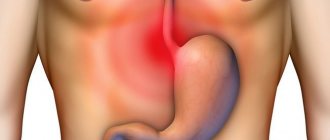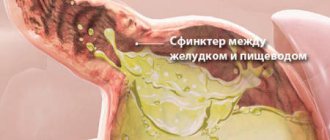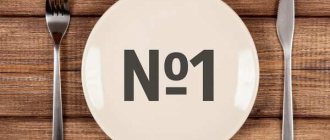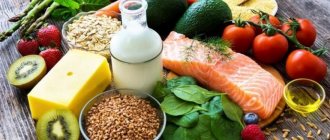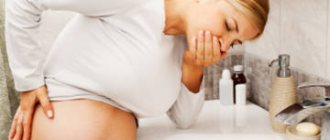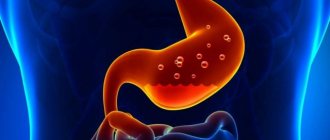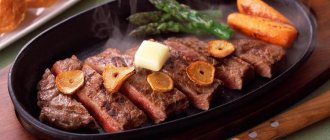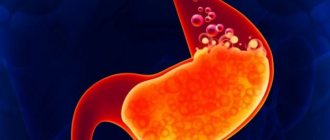General rules
Gastric polyp refers to benign neoplasms on the mucous membrane, protruding into the lumen of the stomach and connected to its wall by a narrow stalk or a wide base. The shape, location in the stomach, size and quantity vary widely. As a rule, the leading factor in the occurrence and development of gastric polyps is chronic progressive gastritis .
Conservative therapy, regardless of whether these are single or multiple polyps, is practically ineffective, and given the high risk of malignancy of the polyp, the optimal measure for its treatment is polypectomy . However, in some cases, with small polyps of the hyperplastic type, in order to identify the dynamics of the growth of neoplasms, the nature of changes in their surface (the appearance of bleeding, erosions, the formation of irregularities), the formation of new growths, a wait-and-see approach is practiced, which consists in prescribing dietary nutrition with regular examination of the stomach.
The diet for polyps in the stomach is determined by the level of acidity. In case of increased or normal secretion, Diet No. 1 , and in case of secretory insufficiency - Diet No. 2 according to Pevzner.
The main goal of therapeutic nutrition is to maximize the sparing of the gastric mucosa from adverse factors, accelerate the evacuation of food from the stomach, and reduce/increase the secretion of gastric juice. The diet is physiologically complete, energy value is at the level of 2900-3000 kcal per day with a diet containing 95-100 g of proteins, 100 g of fats and 400 g of carbohydrates.
The principles of dietary nutrition are:
- Avoiding hot/cold foods that suppress acid-forming function and have an adverse effect on the mucous membrane.
- Limiting foods and dishes made from them that have a stimulating effect on the enzymatic secretion of the gastrointestinal tract (broths, seasonings, raw vegetables, spicy dishes).
- Exclusion from the diet of foods that are difficult to digest and linger in the stomach for a long time.
- For the purpose of mechanical sparing, dishes are boiled. When prescribing a pureed version of the diet, the food is ground, and when not pureed, it is served not pureed; baking without a crust is allowed.
- Salt is moderately limited (up to 6 g/day).
- Small meals, 5-6 times a day, including drinking milk before bed.
- Drinking regimen: 1500-2000 ml of free liquid.
The menu includes milk and vegetable soups. Vegetables and fruits are served only boiled. Fish and meat - low-fat varieties, in pieces. Legumes and pasta are not allowed in the diet. Barley, wheat and corn cereals are not included in the diet. Porridges are prepared crumbly. Fats (vegetable oils and butter) are added to prepared foods. The diet must include milk, cottage cheese, white dried bread/crackers, soft-boiled eggs, jelly, non-sour jam, tea, cocoa. Sweets: honey, sugar, marshmallows.
In case of secretory insufficiency with similar principles of dietary nutrition, the diet of Table No. 2 includes foods and foods that stimulate the production of gastric juice. These include various soups prepared in concentrated meat and fish broths, pasta, vegetables, and the use of seasonings is allowed. Foods that are difficult and take a long time to digest in the stomach are excluded from the diet. Almost all types of culinary processing are allowed (boiled, pureed, stewed, baked, fried without crust), and degrees of grinding. Table salt - up to 15 g/day.
Drinking regimen: 1.5 liters of free liquid. The menu allows first courses (soup, borscht, pickle), which are prepared in meat/fish, vegetable or mushroom broth with the inclusion of various cereals, potatoes, and vegetables. The range of second courses is expanding - baked, boiled, fried lump meat/fish, pancakes with meat, cutlets.
Boiled and baked vegetables (pieces and pureed) - white cabbage, potatoes, zucchini, carrots, beets, cauliflower, green peas, pumpkin. The diet includes cottage cheese, fermented milk products, cream, fruit/vegetable juices, bran decoctions, ripe berries and mashed fruits.
Diet after removal of a polyp in the stomach
Dietary nutrition after surgery to remove polyps ( gastric polypectomy ) is much more important. Typically, minimally invasive endoscopic polypectomy is used to remove single polyps. Gastric resection is performed in rare cases in the presence of multiple large neoplasms (with gastric polyposis), often recurrent polyps or complicated by gastric obstruction, massive bleeding, pinching, necrosis, or malignancy of the polyp. There is no specific drug treatment for stomach polyps. However, since this disease often occurs against the background of gastritis , treatment and diet are prescribed in accordance with the principles of treatment of gastritis ( peptic ulcer ).
Immediately after the operation, the patient is prescribed a full starvation diet for a day. On day 2, one teaspoon is given, after 15 minutes, 1 glass of sweet warm tea and rosehip infusion (50 ml); on the 3rd day, in the absence of abdominal bloating, normal peristalsis and the passage of gases, in order to maximize the sparing of the gastrointestinal mucosa from any impact and reduce inflammation, Diet No. 1A . Diet with reduced energy value. The consumption of mainly carbohydrates and, to a lesser extent, proteins and fats is reduced.
Meals during semi-bed rest. Prescribe pureed, semi-liquid and liquid food containing easily digestible foods and a sufficient amount of liquid. To prevent flatulence , foods containing complex carbohydrates, whole milk and fiber, as well as dishes and foods that stimulate secretion and irritate the gastric mucosa, are excluded from the diet. Hot/cold dishes are excluded. The amount of sodium chloride is limited.
Small meals (small portions 6 times a day) during bed rest. Patients often experience significant fluid loss after surgery. The daily requirement for free fluid during an uncomplicated postoperative period is approximately 2-2.5 liters. For complications ( intoxication , fever ) - 3-3.5 l.
On days 6-8, in order to stimulate mucosal regeneration processes, the patient is transferred to Diet 1B . The diet contains limited carbohydrates with an appropriate protein and fat content. Cold/hot dishes that irritate the mucous membrane and stimulate/inhibit the secretory function of the stomach are excluded. Food is steamed or boiled, served in puree form, soups with a mucous decoction. Drinking regimen: at least 1.5 liters of liquid. The amount of salt is limited. Milk is given at night.
One of the objectives of therapeutic nutrition is to eliminate, within 10-15 days after polypectomy , the deficiency of proteins, vitamins and minerals, which often develops in connection with blood loss, fever, malnutrition in the first postoperative days, and the breakdown of tissue proteins. Therefore, it is necessary, if possible, to transfer the patient to a nutritious diet as early as possible, taking into account his condition, the state of the gastrointestinal tract and the ability to digest food. Usually on the 12th day the patient is transferred to Diet No. 1 . To reduce the phenomenon of metabolic acidosis, dairy products, boiled vegetables and grated fruits are included in the diet.
Nutrition for stomach polyps - what can and cannot be eaten?
One of the reasons for the development of digestive tract diseases in adults is poor nutrition. Therefore, the gastroenterologist pays special attention to food products and their preparation before prescribing drug therapy for neoplasms to the gastroenterologist. The diet depends on the type of pathology, secretory and motor functions. Diet with stomach polyps shows certain differences.
The patient must know which foods are allowed in the daily diet and which are contraindicated.
Table of contents
Polyp in the stomach
Pathology is more common in adults. The disease can develop without clinical symptoms or under the guise of inflammation. It is characterized by the appearance of additional formations on the mucous membrane.
You might be interested in: Virtual colonoscopy: what is it, how is it done and what does it show, where to do it and the price
The morphological types of gastric polyps depend on the cells from which they are formed. The histological structure and extent of the process indicate a certain course of the disease and a certain prognosis.
For simplicity, experts are guided by the following classification.
Table 1 Classification
| Category | Settings |
| To size |
|
| By type | Speakers:
on a surface:
|
| By number | Single
|
Antrum Polyposis.
| |
| Morphological type | Adenomatosis - formed from glandular epithelium;
|
Treatment
The type of assistance for the disease is determined by the gastroenterologist after receiving data from an objective and additional examination. Conservative procedure or surgical intervention - the choice depends on which polyp is present in the stomach. Treatment is prescribed only in connection with diet. This is because diet is important at every stage of recovery.
Drug therapy includes antispasmodics, antacids, antisecretors, and drugs that improve the regeneration of the mucous membrane. If a Helicobacter infection is detected, antibacterial agents, bismuth subcitrate and proton pump blockers are added.
What is a gastric polyp, how to treat it and if it is dangerous
If polyps are removed, a special menu is recommended. Eating raw foods and foods that irritate the digestive tract is contraindicated. Nutritional expansion is carried out one after another. Start with liquid food, adding new ingredients gradually so as not to mechanically damage the tissue.
Principles of diet for gastric polyps
If the pathology is confirmed, the patient must change the procedure for preparing and eating food. In order for dietary products in the gastric polyp to contribute to the rapid recovery of the body, the following principles are observed:
- Choose foods that provide vitamins, nutrients and minerals that meet your daily needs.
- The amount of food per day is divided into 3 main and 2-3 additional.
- The volume of each serving should be small; there should be no more than 3 hours between snacks and the main part.
- 2 hours before bed and 2 hours at night.
- It is better to cook before eating; storage for more than 24 hours is prohibited.
- Eat foods that are too hot or too cold to avoid irritating your digestive tract. You can eat in the warmth.
- Vegetable oil is added to cooked food to coat the stomach.
- You should give preference to single-ingredient dishes.
- Cooking methods include cooking, steaming, steaming, and sometimes oven baking.
Attention!
Assess the effectiveness of the diet in eliminating clinical symptoms and improving the patient's condition.
What can you eat if you have polyps in your stomach?
Despite the restrictions, you can cook delicious dishes. It is important to follow the rules for combining permitted products. This is necessary for complete absorption of the components. We recommend the following list of foods that you can eat with stomach polyps
- low-fat hard and fermented milk cheese;
- butter - sunflower, corn, olives;
- confectionery products of soft consistency - marshmallows, marshmallows without chocolate, marshmallows, nougat;
- confectionery products without yeast, wheat bread, cookies, gingerbread without filling;
- boiled eggs;
- porridge;
- vegetable broth;
- durum wheat-based pasta;
- potatoes, beets, carrots, cauliflower, broccoli, pumpkin - steamed stew.
- lean meat - veal, rabbit, chicken;
- low-fat dairy products - sour cream, yogurt, whole milk.
What products are contraindicated
Many edible ingredients are prohibited, and some should be limited. Strict prohibitions apply to alcoholic beverages, marinades, smoked, fried and spiced foods.
Contraindicated products for gastric polyps:
- fatty meat and fish - pork, lamb, salmon, mackerel;
- corn, radishes, white cabbage, beans, peas, tomatoes;
- high-fat dairy products;
- chocolate, coffee;
- spices, seasonings;
- citrus fruits, sour fruits and raw berries;
- bread and cake with yeast;
- butter.
What can you drink
In patients with gastrointestinal pathology, it is necessary to maintain a drinking regime. The daily amount of fluid in an adult is 1800-2000 ml. Water should be consumed approximately half of the standard volume. Other allowed drinks for stomach polyps:
- Kisses and compotes from apples, pears, peaches, plums, apricots, strawberries;
- vegetable juices from carrots, pumpkin, turnips, also mixed;
- free-brewed green or black tea;
- rosehip decoction, dried fruits;
- fruit nectars or unoxidized juices diluted with water.
- Avoid frescos or juices that contain acid due to their possible irritant effect on the gastrointestinal mucosa.
- Important!
- Potato juice is a natural remedy, so it is taken in limited doses on the advice of a doctor.
Sample menu for the week
Dietary restrictions should not affect the variety of dishes. Initially cooked food affects appetite and consumption of food components. From the allowed food you can create a complete diet. An approximate menu with a gastric polyp for a week by day is as follows.
Monday
| hours | Menu |
| 9. 00 | Oatmeal; steamed omelette; Black tea |
| 11.00 | Paste; cookie |
| 13. 30 | Soup with meatballs and vegetables; mashed potatoes with boiled chicken; pink thigh broth |
| 16.00 | Casserole |
| 19. 00 | Buckwheat porridge; beef balls; compote with dried fruits |
Tuesday
| hours | Menu |
| 9. 00 | milk buckwheat porridge; green tea |
| 11. 00 | jelly fruits, cakes |
| 13.30 | rice soup; vegetable stew; rabbit eyes; apple compote |
| 16. 00 | yogurt; pebble cookies |
| 19. 00 | Lazy dumplings; sour cream; pink broth for thighs |
Wednesday
7
| watch | menu |
| 9. 00 | Meat soufflé, oatmeal, black tea |
| 11.00 | Marshmallow; pear nectar |
| 13. 30 | Stewed potatoes with chicken; turnip salad; peach kiss |
| 16. 00 | Banana; cookie |
| 19. 00 | Vegetable and veal biscuits; dried fruit broth |
Thursday
16
| hours | Menu |
| 9. 00 | Men's mousse; Kissel Slim-Apple |
| 11.00 | Jelly fruits; Bagels |
| 13. 30 | Vegetable soup; mashed potatoes, steamed fish; rose hip decoction |
| 16.00 | Yogurt; applesauce |
| 19. 00 | Buckwheat porridge; boiled egg; green tea |
Friday
7
| hours | Menu |
| 8. 30 | Chicken pudding; hard cheese; pear and apple compote |
| 11. 00 | Casserole |
| 13. 00 | Noodles soup; stewed vegetables; boiled beef |
| 16.30 | Yogurt; cookie |
| 19. 00 | Fish and vegetable casserole; black tea |
Saturday
Sunday
| hours | Menu |
| 9. 00 | Buckwheat milk soup; hard cheese; tea |
| 11. 00 | Apricot jelly; Galleries |
| 13.30 | Worst borscht; Rice porridge, steamed chicken escalopes; Dried fruit compote |
| 16. 00 | Apple for cookies |
| 19.00 | Rice porridge, egg white for omelet; pink femoral decoction |
Recipes for simple and tasty dishes for patients with polyps in the stomach
Patients who are prescribed a diet do not always adhere to it. In some cases, the diet is monotonous for gastric polyps. Or it is considered inedible if you cannot eat regular dishes. Therefore, you should consider expanding your diet with components that can be eaten. However, prepare them differently than described in cookbooks.
| Menu | |
| 9. 00 | Pumpkin and cottage cheese; milky kisses |
| 11.00 | Fruit pastilla |
| 13. 30 | Puree vegetable potato soup with turkey meat balls |
| 16. 00 | Yogurt; cookie |
| 19.00 | Minced meat and vegetables; green tea |
| Name | Recipe |
| Meatballs with rice and vegetables | The meat is turned through a meat grinder. You combine it with boiled, half cooked rice, egg and stir. Season to taste with salt and pepper. Take some water, salt and bring to a boil. Place one stuffed meatball and rice into boiling water. Separately, pour vegetable oil on the onions and carrots until they are half cooked. Bring the meatballs to a boil, add the vegetables and finish cooking over low heat. Steamed omelette with vegetables |
| Omelette with vegetables | Cut vegetables - carrots, zucchini, cauliflower - into small pieces and place in a double boiler. Pour some salt on them. Beat the egg with a whisk, add a little milk and salt. When the vegetables are soft, pour the egg-milk mixture over them and let them steam for 10-15 minutes. Pumpkin and apple marshmallows |
| Pumpkin and apple marshmallows | The puree is made from cooked pumpkin and baked apples separately. Add sugar. Beat the eggs one at a time with a mixer until foamy, then add a little sugar. Combine fruit and egg white puree and mix well. Dry on parchment moistened with vegetable oil for 4-6 hours at 40 degrees in the oven. Remove the hot pastilla from the paper and cut into pieces. |
The diet should not only be healthy, but also tasty. Only in this case will patients adhere to a healthy diet, which will have a positive effect on treatment results.
Recommended materials:
- Esophageal polyp - causes, symptoms and treatment
- What is a gastric lamp: Symptoms and treatment
- Treatment of gastritis at home
- How to perform a gastric biopsy and how to conduct the study
- How to prepare for FGDS
- Can milk cause heartburn?
- What products? good for the stomach
- Barrett's diet and menu for the esophagus
Indications
- Diet No. 1 for polyps in the stomach with increased/normal secretion;
- Diet No. 2 for polyps in the stomach with secretory insufficiency.
After polypectomy :
- starvation diet (1-3 days);
- Diet 1A for 3-5 days;
- Diet 1B for 6-8 days;
- Diet No. 1 on day 12 for a period of 1-2 months with normo / hyperchlorhydria ;
- Diet No. 2 for hypo / achlorhydria .
Authorized Products
The diet involves preparing the first soups in vegetable/potato broth with pureed vegetables or boiled buckwheat, semolina, and white rice. You can include milk soups with noodles and puree soups with pureed chicken in your diet. Soup dressings are not fried, but rather seasoned with oil when serving. The diet includes dried white wheat bread, white crackers, biscuits, chicken, lean beef, rabbit meat, turkey, and unsalted lean ham.
From fish - low-fat varieties (carp, pike, hake, pike perch). Allowed are steamed omelet eggs and soft-boiled eggs, unsalted butter and various vegetable oils that are used to add to prepared dishes. The diet includes vermicelli, buckwheat, semolina, and white rice. Porridges are cooked in milk or water until completely boiled or pureed. Vegetables (potatoes, cauliflower, beets, zucchini, pumpkin, carrots) are boiled or steamed.
Dairy products in the diet should include milk and cream, non-acidic yogurt and kefir, fresh cottage cheese, sour cream and curd cheese. Lazy dumplings and cheesecake puddings are made from cottage cheese. Allowed 1-2 times a week in grated mild cheese and 2 soft-boiled chicken eggs or in the form of a steam omelet twice a week. For an unprocessed version of the appetizer table, you can include a salad of boiled vegetables, liver pate, boiled meat/fish, doctor's sausage, lean ham, jellied fish, and sturgeon caviar.
Sweet desserts - milk jelly, meringues, marshmallows, sour jam, marshmallows. Desserts are prepared from pureed steamed berries with the addition of semolina. Baked fruits and sweet berries are allowed. You can also prepare jelly, puree, jelly, compotes. Drinks in the diet include rose hip decoction, fruit juices, tea with milk, and weak coffee with milk.
Table of permitted products
| Proteins, g | Fats, g | Carbohydrates, g | Calories, kcal | |
Vegetables and greens | ||||
| cauliflower | 2,5 | 0,3 | 5,4 | 30 |
| boiled cauliflower | 1,8 | 0,3 | 4,0 | 29 |
| potato | 2,0 | 0,4 | 18,1 | 80 |
| boiled potatoes | 2,0 | 0,4 | 16,7 | 82 |
| boiled carrots | 0,8 | 0,3 | 5,0 | 25 |
| boiled beets | 1,8 | 0,0 | 10,8 | 49 |
Fruits | ||||
| apricots | 0,9 | 0,1 | 10,8 | 41 |
| watermelon | 0,6 | 0,1 | 5,8 | 25 |
| bananas | 1,5 | 0,2 | 21,8 | 95 |
| melon | 0,6 | 0,3 | 7,4 | 33 |
| peaches | 0,9 | 0,1 | 11,3 | 46 |
Berries | ||||
| strawberry | 0,8 | 0,4 | 7,5 | 41 |
| raspberries | 0,8 | 0,5 | 8,3 | 46 |
Cereals and porridges | ||||
| buckwheat porridge with milk | 4,2 | 2,3 | 21,6 | 118 |
| semolina porridge with milk | 3,0 | 3,2 | 15,3 | 98 |
| oatmeal with water | 3,0 | 1,7 | 15,0 | 88 |
| cereals | 11,9 | 7,2 | 69,3 | 366 |
| white boiled rice | 2,2 | 0,5 | 24,9 | 116 |
Flour and pasta | ||||
| noodles | 12,0 | 3,7 | 60,1 | 322 |
Bakery products | ||||
| white bread crackers | 11,2 | 1,4 | 72,2 | 331 |
Confectionery | ||||
| jam | 0,3 | 0,2 | 63,0 | 263 |
| marshmallows | 0,8 | 0,0 | 78,5 | 304 |
| meringues | 2,6 | 20,8 | 60,5 | 440 |
| paste | 0,5 | 0,0 | 80,8 | 310 |
Raw materials and seasonings | ||||
| honey | 0,8 | 0,0 | 81,5 | 329 |
| milk sauce | 2,0 | 7,1 | 5,2 | 84 |
Dairy | ||||
| milk 3.2% | 2,9 | 3,2 | 4,7 | 59 |
| condensed milk | 7,2 | 8,5 | 56,0 | 320 |
| cream 15% (low fat) | 2,3 | 15,0 | 3,6 | 161 |
Cheeses and cottage cheese | ||||
| cottage cheese | 17,2 | 5,0 | 1,8 | 121 |
Meat products | ||||
| boiled beef | 25,8 | 16,8 | 0,0 | 254 |
| beef stew | 16,8 | 18,3 | 0,0 | 232 |
| beef liver | 17,4 | 3,1 | 0,0 | 98 |
| boiled beef tongue | 23,9 | 15,0 | 0,0 | 231 |
| boiled veal | 30,7 | 0,9 | 0,0 | 131 |
Bird | ||||
| boiled chicken breast | 29,8 | 1,8 | 0,5 | 137 |
| boiled chicken drumstick | 27,0 | 5,6 | 0,0 | 158 |
Eggs | ||||
| omelette | 9,6 | 15,4 | 1,9 | 184 |
| soft-boiled chicken eggs | 12,8 | 11,6 | 0,8 | 159 |
Fish and seafood | ||||
| boiled fish | 17,3 | 5,0 | 0,0 | 116 |
Oils and fats | ||||
| vegetable oil | 0,0 | 99,0 | 0,0 | 899 |
| peasant unsalted butter | 1,0 | 72,5 | 1,4 | 662 |
Non-alcoholic drinks | ||||
| mineral water | 0,0 | 0,0 | 0,0 | — |
| coffee with milk and sugar | 0,7 | 1,0 | 11,2 | 58 |
| black tea with milk and sugar | 0,7 | 0,8 | 8,2 | 43 |
Juices and compotes | ||||
| compote | 0,5 | 0,0 | 19,5 | 81 |
| juice | 0,3 | 0,1 | 9,2 | 40 |
| apricot juice | 0,9 | 0,1 | 9,0 | 38 |
| jelly | 0,2 | 0,0 | 16,7 | 68 |
| pumpkin juice | 0,0 | 0,0 | 9,0 | 38 |
| * data is per 100 g of product | ||||
What can you eat
Any therapeutic diet involves the patient consuming only healthy foods from the approved list and excluding harmful ones. So, with this pathology you can eat:
- low-fat fermented milk products;
- yesterday's wheat bread;
- meat, low-fat fish;
- boiled vegetables;
- cereals, pasta;
- sweet fruits, berries;
- scrambled eggs.
As for drinks, you are allowed to drink various non-acidic compotes, jelly, herbal decoctions, weak tea, and medicinal mineral water without gas. Your diet should definitely include pureed porridge, soups with vegetable or low-fat (chicken) broth. When the disease worsens, you need to eat slimy porridge cooked in water.
Fully or partially limited products
The diet completely excludes vegetables containing a lot of fiber (white cabbage, radishes, turnips, rutabaga, unpeeled fruits), as well as all legumes and foods containing a lot of connective tissue (veins, cartilage, skin of fish and birds). It is forbidden to cook first courses in highly extractive, saturated broths. Borscht, cabbage soup, and okroshka are excluded from the first courses. Meat products include fatty meats, duck, goose, lamb, smoked meats and canned meat. Fatty fish and canned fish are prohibited.
All pickled and pickled vegetables and canned vegetables, which cause increased secretion of gastric juice, are excluded from the diet. Dill, sorrel, spinach, parsley, onions, and mushrooms are excluded from greens and vegetables, since they contain many organic acids and essential oils that irritate the gastrointestinal mucosa.
You should not include hard-to-digest porridges (millet, pearl barley, corn, barley) in your diet. Fried and hard-boiled chicken eggs are poorly digestible, so they are excluded from the diet in this form. The use of seasonings, sauces, horseradish, pepper, and mustard that irritate the gastric mucosa is not allowed.
Fresh bread, animal and cooking fats, butter and puff pastry, chocolate and ice cream, and dried fruits are prohibited. You should not consume unripe and sour fruits and berries, alcohol-containing drinks, black coffee, carbonated drinks.
Table of prohibited products
| Proteins, g | Fats, g | Carbohydrates, g | Calories, kcal | |
Vegetables and greens | ||||
| vegetables legumes | 9,1 | 1,6 | 27,0 | 168 |
| sauerkraut | 1,8 | 0,1 | 4,4 | 19 |
| bulb onions | 1,4 | 0,0 | 10,4 | 41 |
| cucumbers | 0,8 | 0,1 | 2,8 | 15 |
| white radish | 1,4 | 0,0 | 4,1 | 21 |
| celery (root) | 1,3 | 0,3 | 6,5 | 32 |
| horseradish | 3,2 | 0,4 | 10,5 | 56 |
| garlic | 6,5 | 0,5 | 29,9 | 143 |
| spinach | 2,9 | 0,3 | 2,0 | 22 |
| sorrel | 1,5 | 0,3 | 2,9 | 19 |
Mushrooms | ||||
| mushrooms | 3,5 | 2,0 | 2,5 | 30 |
Nuts and dried fruits | ||||
| nuts | 15,0 | 40,0 | 20,0 | 500 |
| dried fruits | 2,3 | 0,6 | 68,2 | 286 |
Cereals and porridges | ||||
| corn grits | 8,3 | 1,2 | 75,0 | 337 |
| pearl barley | 9,3 | 1,1 | 73,7 | 320 |
| millet cereal | 11,5 | 3,3 | 69,3 | 348 |
| barley grits | 10,4 | 1,3 | 66,3 | 324 |
Flour and pasta | ||||
| pasta | 10,4 | 1,1 | 69,7 | 337 |
| pancakes | 6,1 | 12,3 | 26,0 | 233 |
| vareniki | 7,6 | 2,3 | 18,7 | 155 |
| dumplings | 11,9 | 12,4 | 29,0 | 275 |
Bakery products | ||||
| wheat bread | 8,1 | 1,0 | 48,8 | 242 |
Confectionery | ||||
| candies | 4,3 | 19,8 | 67,5 | 453 |
| cookie | 7,5 | 11,8 | 74,9 | 417 |
Ice cream | ||||
| ice cream | 3,7 | 6,9 | 22,1 | 189 |
Cakes | ||||
| cake | 4,4 | 23,4 | 45,2 | 407 |
Chocolate | ||||
| chocolate | 5,4 | 35,3 | 56,5 | 544 |
Raw materials and seasonings | ||||
| seasonings | 7,0 | 1,9 | 26,0 | 149 |
| mustard | 5,7 | 6,4 | 22,0 | 162 |
| ginger | 1,8 | 0,8 | 15,8 | 80 |
| ketchup | 1,8 | 1,0 | 22,2 | 93 |
| mayonnaise | 2,4 | 67,0 | 3,9 | 627 |
| ground black pepper | 10,4 | 3,3 | 38,7 | 251 |
| chilli | 2,0 | 0,2 | 9,5 | 40 |
Dairy | ||||
| dairy products | 3,2 | 6,5 | 4,1 | 117 |
| cream 35% (fat) | 2,5 | 35,0 | 3,0 | 337 |
Cheeses and cottage cheese | ||||
| cheese | 24,1 | 29,5 | 0,3 | 363 |
Meat products | ||||
| pork | 16,0 | 21,6 | 0,0 | 259 |
| salo | 2,4 | 89,0 | 0,0 | 797 |
| bacon | 23,0 | 45,0 | 0,0 | 500 |
| ham | 22,6 | 20,9 | 0,0 | 279 |
Sausages | ||||
| dry-cured sausage | 24,1 | 38,3 | 1,0 | 455 |
| sausages | 10,1 | 31,6 | 1,9 | 332 |
Bird | ||||
| fried chicken | 26,0 | 12,0 | 0,0 | 210 |
| smoked chicken | 27,5 | 8,2 | 0,0 | 184 |
| duck | 16,5 | 61,2 | 0,0 | 346 |
| goose | 16,1 | 33,3 | 0,0 | 364 |
Oils and fats | ||||
| animal fat | 0,0 | 99,7 | 0,0 | 897 |
| cooking fat | 0,0 | 99,7 | 0,0 | 897 |
Alcoholic drinks | ||||
| dry white wine | 0,1 | 0,0 | 0,6 | 66 |
| dry red wine | 0,2 | 0,0 | 0,3 | 68 |
| vodka | 0,0 | 0,0 | 0,1 | 235 |
| cognac | 0,0 | 0,0 | 0,1 | 239 |
| beer | 0,3 | 0,0 | 4,6 | 42 |
Non-alcoholic drinks | ||||
| bread kvass | 0,2 | 0,0 | 5,2 | 27 |
| * data is per 100 g of product | ||||
Advantages and disadvantages
| pros | Minuses |
|
|
Sample menu
If a person is diagnosed with a stomach polyp, his diet is determined by his attending physician. At the same time, the diet also depends on the acidity of the gastrointestinal tract, which can be determined by endoscopic examination using a probe. However, each patient should know approximately what foods are allowed to eat. Let's look at a sample menu for 4 days.
- Breakfast: buckwheat porridge cooked with milk;
- a sandwich made from whole grain bread with low-fat and unsalted cheese;
- green tea.
- allowed fruits;
- lean borscht;
- cottage cheese casserole with honey;
- steamed omelette;
Return to contents
Doctors draw the attention of patients that diet for polyposis of the gastrointestinal tract is one of the main components of treatment. If the patient does not adhere to all the doctor’s recommendations regarding proper nutrition, there is a risk of complications of the disease and its development into cancer, which can even lead to death. After surgery to remove polyps from the stomach, the diet will be quite meager, however, during the rehabilitation process, a sufficient amount of food will be added to the menu, so it will not be so difficult for the patient to adhere to the prescribed diet.
Comments from nutritionists
Dietary nutrition after polypectomy is the main component of rehabilitation and ignoring it can provoke re-growth of polyps. As a rule, the rehabilitation period after gastric polypectomy is quite long (2-3 months), and the diet is more strict.
In the presence of concomitant diseases, such as chronic gastritis , gastroduodenitis , gastric ulcer, you must follow the diet for one year. Indications for discontinuing the diet are favorable endoscopic examination data and the absence of signs of exacerbation of concomitant diseases.
One of the frequent exacerbations in patients after gastric polypectomy is dumping syndrome (too rapid passage of food from the stomach to the intestines). Manifested by dizziness , belching , severe weakness, vomiting and decreased blood pressure after eating. This condition is provoked by foods high in quickly digestible carbohydrates. In order to prevent dumping syndrome, the consumption of potatoes, sugar, honey, preserves, jams, and wheat flour products should be limited in the diet. It is recommended to start eating with dense foods, and after finishing the meal, take a horizontal position.
It is especially important in the presence of stomach polyps, in order to prevent their degeneration into malignant tumors, to stop drinking alcohol and smoking, since alcohol and tobacco have an irritating effect on the gastric mucosa, reduce its protective properties and promote its growth.
Features of the diet for polyps in the stomach
For any type of digestive system disease, nutritional correction is one of the basic methods of non-drug therapy.
This also applies to tumors - a suitable menu is selected for the patient even in cases where surgery is planned to remove the tumor.
In this publication we will discuss what the diet should be for stomach polyps and why follow it.
Polyps are benign formations that form on the surface of the gastric mucosa. They may not manifest themselves in any way (that is, occur asymptomatically or latently) or be characterized by signs characteristic of various dysfunctions of the gastrointestinal tract system:
- poor appetite;
- nausea, vomiting;
- belching, heartburn;
- abdominal discomfort, flatulence;
- weakness, fatigue.
Following a diet for stomach polyps is necessary to prevent complications.
These formations often occur against the background of a chronic inflammatory process, which in itself is a reason for menu correction.
In addition, rough or irritating foods can damage the tissue of the polyp, which leads to a sharp deterioration in the patient's condition. To prevent this, the diet is changed according to the characteristics of the pathology.
Menu design principles
In most cases, polyps in the stomach are removed surgically, but there are situations when the patient can be managed conservatively (that is, treated with medications, proper nutrition, and spa procedures).
Although this second treatment option does not guarantee permanent relief from symptoms, it is used for small tumors or before surgery to stabilize the condition.
Thus, the diet must be complete - after all, it is designed for a long period of time.
If polyps appear in the stomach, you need to eat:
- 5-6 times a day.
- In small portions.
- By eating warm rather than cold or hot foods.
- By eliminating irritants (rough, long-digesting foods, hot seasonings, fibrous meat).
Required preparation:
- steamed;
- baking in the oven;
- boiling;
- stewing in a small amount of oil without pre-frying.
You should not eat before bed or have a large dinner, or go to bed immediately after eating.
Diet planning
You can create a suitable menu without any hassle if you know which foods are allowed to be included in the diet plan, and which options are best avoided so as not to harm the stomach. At the same time, even healthy foods should be consumed in moderation - this will avoid irritating the gastrointestinal tract.
Authorized Products
The list of foods that can be entered into the menu includes:
- Lean varieties of meat, poultry and fish (without bones and rough fragments).
- Cereals (except barley).
- Dairy products.
- Yesterday's white bread and crackers soaked with tea.
- Small amounts of butter and vegetable oil.
- Pasta made from durum wheat.
- Sweet fruits, seedless berries.
- Boiled sausages (Doctorskaya, Molochnaya) without fat and lard.
- The cheese is soft and not sharp.
- Potatoes, carrots.
- Broccoli, cauliflower.
- Eggplants, zucchini.
- Heat-treated onions.
- Dill, parsley.
- Young cabbage, cucumbers, sweet peppers - limited in the absence of symptoms.
- Soups are vegetarian or made with lean meats, poultry, and fish.
- Soft-boiled eggs and in the form of steam omelettes.
- Bananas.
- Marshmallows, marshmallows, marmalade without glaze, biscuits and oatmeal cookies.
During the period of exacerbation of symptoms due to gastric polyps, you need to eat little by little and chop and puree all large fragments of food (for example, pieces of meat or vegetables). As the condition improves, this will no longer be necessary, but the products should still be soft, without seeds or hard ingredients.
You should always remember about the gentle thermal regime and eat food only warm.
Prohibited Products
Nutrition for polyps in the stomach should not include:
- fatty meats, fish, poultry;
- lard, marinades, smoked meats, pickles;
- canned food with excess oil;
- radish;
- lemons, sour oranges, grapefruits;
- sausages with pepper, bacon;
- spicy seasonings;
- fried foods;
- processed cheese;
- radish;
- ice cream, chocolate;
- nuts, peanuts;
- mayonnaise, soy sauce;
- fast food;
- semi-finished products.
During the acute period, you should not eat vegetables and fruits without heat treatment.
Salads with fresh carrots, cabbage, green onions, dill or parsley, even in small quantities, are excluded. You should also not eat cookies with any type of glaze or baked goods with nuts, cream, or toppings. Curd cheeses with chocolate and caramel additives are prohibited.
The list of permitted options for polyps in the stomach area includes:
- Still mineral water, purified, boiled.
- Green tea, weak black tea without additives.
- Compote, fruit drink made from sweet fruits and berries.
- Rose hip decoction.
- During the period of remission (absence of symptoms) dietary options for cocoa, natural juices.
You can't drink:
- alcohol;
- coffee;
- ice cream based milkshakes
- hot chocolate from bags (quick brewed with excess sugar);
- carbonated drinks;
- sweetened juices.
When it comes to whole milk, caution is required.
Polyps do not affect sensitivity to this product, but the presence of concomitant gastrointestinal pathologies in the patient may cause a lack of the lactase enzyme required for digestion.
This results in nausea, vomiting, flatulence and diarrhea after consumption. Therefore, the basic criterion for introducing it to the menu is individual tolerance.
What you need to know
The diet in the presence of polyps in the stomach area can be adjusted depending on factors such as:
- patient's age;
- concomitant pathologies of the gastrointestinal tract;
- endocrine disorders (for example, diabetes);
- food allergies;
- level of gastric secretion (normal, high, low).
The menu requirements must be observed at all times. This will avoid the risk of acute inflammation of the mucous membrane and reduce the likelihood of malignancy (malignant transformation) of neoplasms. After removal of polyps, a strict diet is recommended; you can read about it in other publications on the site.
Source: https://easymed-nn.ru/narosty/stomach/dieta-pri-polipah-zheludka.html
Results and reviews
Dietary nutrition after removal of gastric polyps allows you to restore full gastrointestinal function in a relatively short time, as evidenced by patient reviews.
- “... An ulcer sufferer with extensive experience. During the last exacerbation, examination revealed an adenomatous polyp in the antrum of the stomach. Two months later he was operated on as planned. I've been on the diet for almost six months now. And as I was told, I should be on this diet to prevent the regrowth of polyps at least 2 times a year, during the period of spring and autumn exacerbation of peptic ulcer disease”;
- “... An endoscopic examination diagnosed a polypoid tumor in the antrum of the stomach. Endoscopic surgery was recommended. While I am under clinical observation, I was prescribed Diet No. 1. I’m preparing mentally for the operation.”
